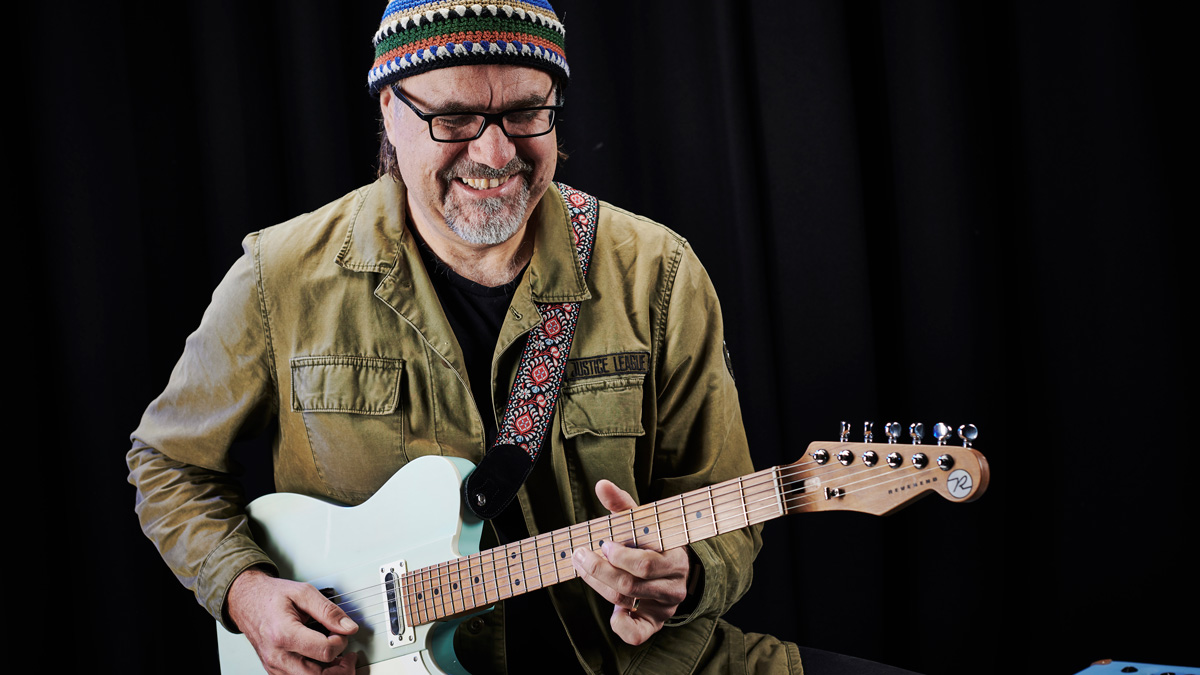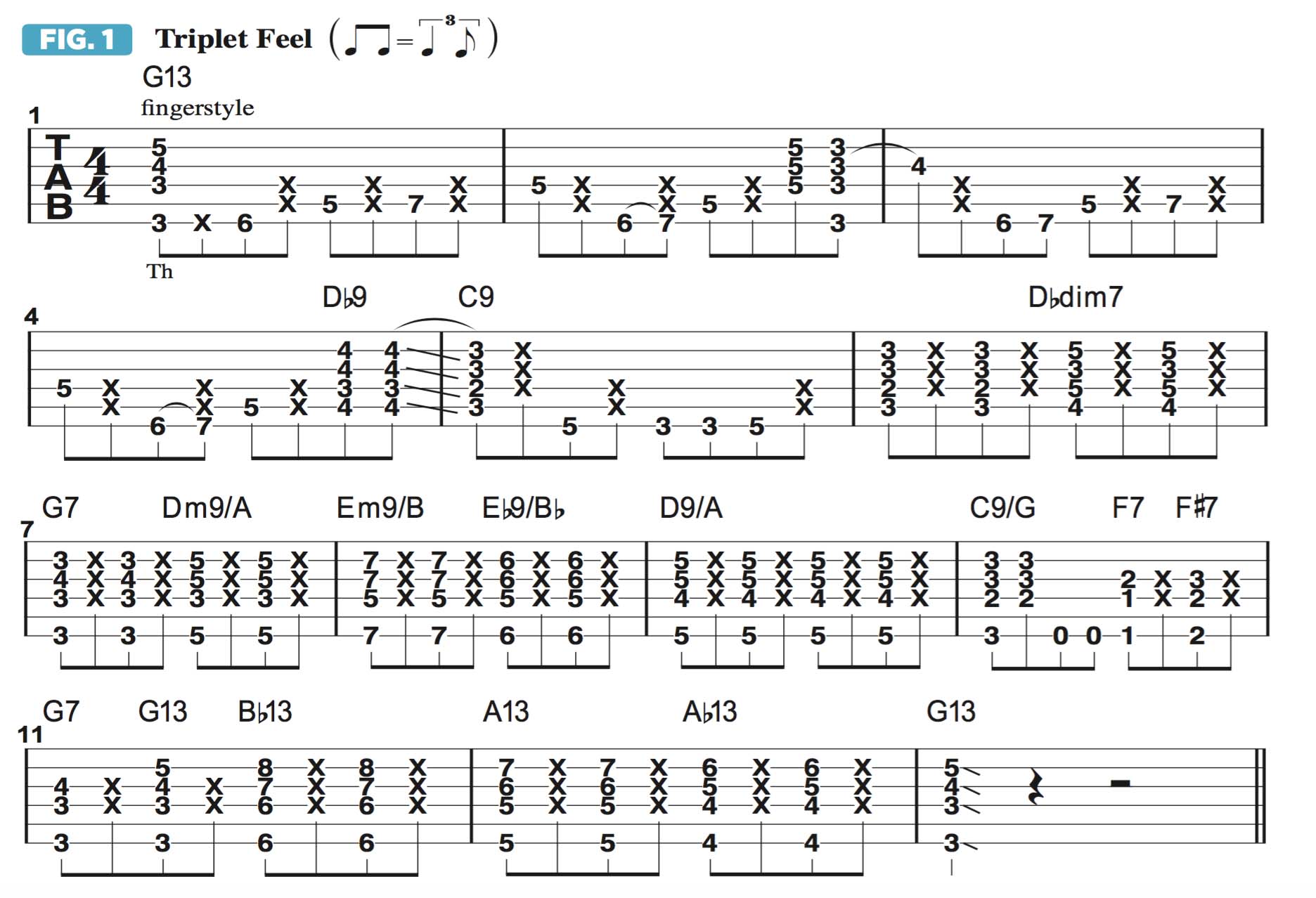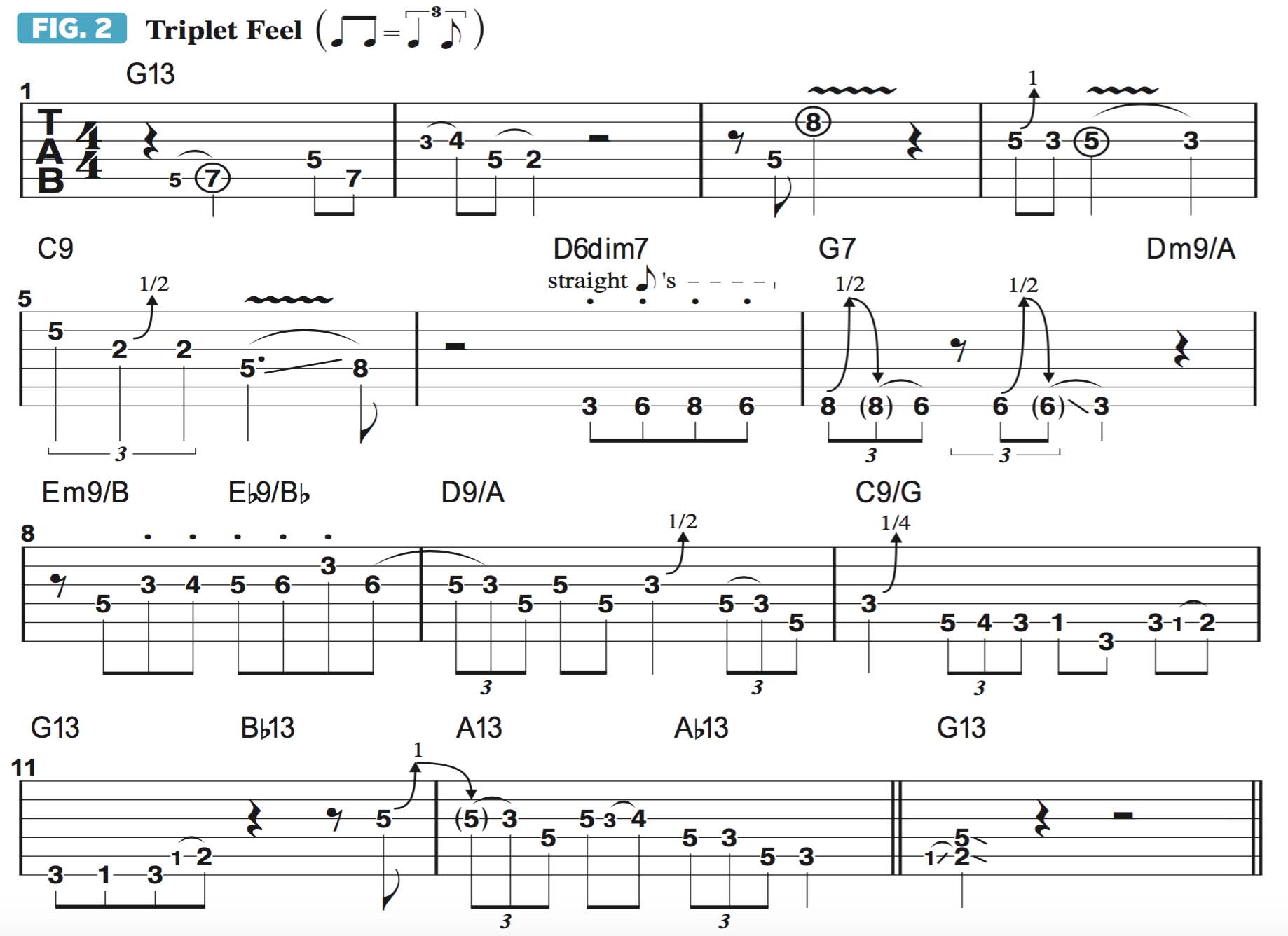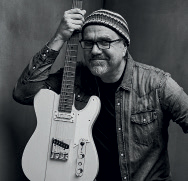
Hello, and welcome to my column! Over the course of these lessons, I’ll be discussing a wide variety of approaches to both rhythm guitar playing and improvisation in the realms of blues, rock, country and more... which begs the immortal question: Can you dig it? I think you can!
Years ago, I would often play duo gigs with a harmonica player, and when he’d take a solo, I had to cover the chords, bass line and groove with my guitar, “comping” behind his solos.
We would play a lot of 12-bar blues songs, but instead of just sticking with a standard I - IV - V (one-four-five) chord progression, I would often throw in a few “jazzy” substitutions, without going total jazzbo (slang for jazz enthusiast). Let’s use the key of G, for example. A standard I - IV - V “dominant”-type blues in G consists of the chords G7 (I7), C7 (IV7) and D7 (V7).
Figure 1 represents a 12-bar rhythm part in G that incorporates some additional harmony, via expanded chords like 9ths and 13ths, as well as a few passing chords that pull the music toward a jazzier sound. The example is played with a swing-eighths triplet feel, also known as a shuffle.
In bars 1-4, I supplement a G13 chord with a walking bass line, adding muted-string accents on most of the eighth-note upbeats (the “and” counts). On beat 4 of bar 4, I play a Db9 chord to anticipate the change to the IV chord, C9, sliding down on beat 1 of the next bar.
In bar 6, I play Dbdim7 on beat 3 as a passing chord back to the I, G7. In bars 7 and 8, I add harmonic interest to the progression by moving through a series of chords every two beats: G7 - Dm9/A - Em9/B - Eb9/Bb. I then land on the V chord, D9/A on beat 1 of bar 9.
In the last two bars, I spice things up by starting on G13 then chromatically descending Bb13 - A13 - Ab13 to round out the progression.
All the latest guitar news, interviews, lessons, reviews, deals and more, direct to your inbox!
Figure 2 is an improvised solo played over this progression, for which I took an “Albert Collins” approach and emulate his distinct melodic style.
A signature approach of Albert’s was to alternate between parallel major and minor pentatonic-based riffs, and here I begin with lines based on G major pentatonic (G, A, B, C, E) and then switch to G minor pentatonic (G, Bb, C, D, F) in bar 4.
As you play through the solo, you’ll see that I continue to alternate between the two scales. Albert picked aggressively with his fingers, snapping the strings against the fretboard, and I took the same approach here.
Picking with one’s fingertips in this way will provide the opportunity for greater musical expression via more pronounced contrasts in articulation and dynamics, so be cognizant of these factors as you play.
Greg Koch is a large human who coaxes guitars into submission in a way that has left an indelible print on the psyches of many Earth dwellers. Visit GregKoch.com to check out his recordings, instructional materials, signature musical devices and colorful hats.



